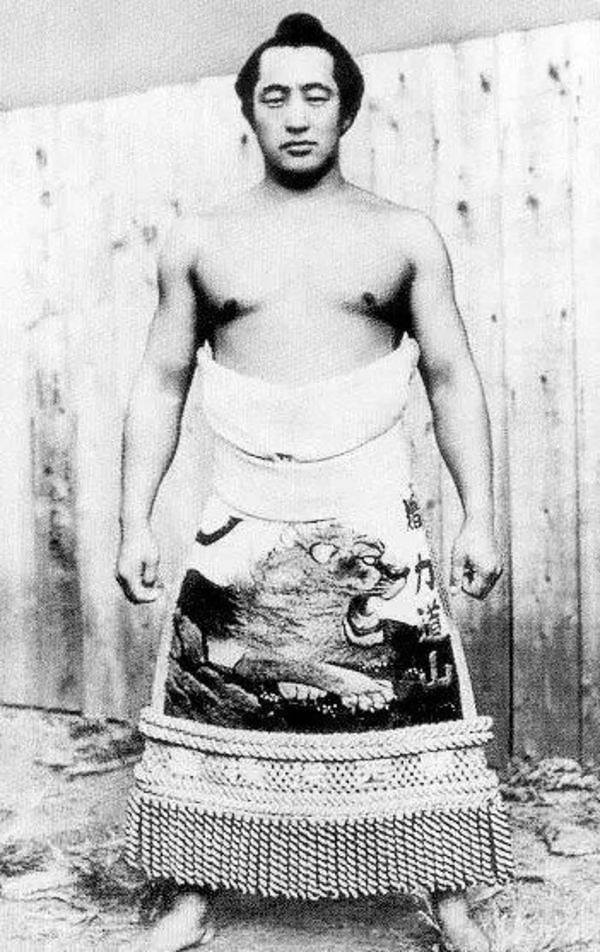tohm's Fashion Week (Or 5 things I don't like about fashion): 2
Fashion is behind the times. Globalization has sped up the spread of fashion memes, but it can never move fast enough. Fashion is for the wrong people. That's why.
Yesterday I said about 25% of people rely on their own opinion (self referential, intrinsic esteem) 50% rely on other people's opinion, and about another 25% don't care about clothing at all.
Now if you lump the two quarters that don't listen to other people together you could call them 'opinion makers' whether it results in 'out-there' fashion or just think fashion itself is completely stupid. The other 50% we call 'opinion takers'.
Fashion is for opinion takers. I may speak with a lack of charity, but its people for various reasons that need permission to wear what they wear. And my best guess is that it's based on some vertical heirarchy that flows out of the Paris/London, New York and Tokyo epicenters, down into the Myers and David Jones of this world.
For half the world the term 'in style' is redundant, meaningless or whatever. It is not sufficient explanation to justify buying a new outfit each season just because what they wore last season isn't in style anymore. They don't think like that. Clothes are simply good or bad, evaluated by them and what choices others are making with their clothing are irrelevant. (But perhaps interesting).
The other half have clothing made for them, they have fashion aggregators to seek the reassurance of, Trinny and Suzannah touring their local Westfield Shopping Mall to tell them what to do or not, they have catalogues, magazines, hip-hoppers, sports stars etc to provide instructions for them and they obey.
Again I uncharitably said that 50% does as their told yesterday, and perhaps it would be more accurate to say 'they try to do what they are told' because many of them simply don't have the figure, or finances or whatever to successfully emulate what they have told is acceptable. (Show's like 'What Not To Wear' and 'How To Look Good Naked' are dedicated to correcting people applying Fashion's general advice to their own unique circumstances and the resultant fashion travesties).
So it's understandable why I don't like this aspect of fashioon, but i understand it, and rationally it is what is going to make money.
But where does fashion get its ever evolving seasonal standards of acceptability from? I'm sure I've covered this before but I assume not everyone (or anyone) could possibly be a dedicated reader of this blog, so I'll rehash. It's the facility of coolhunters to find out what opinion makers are wearing, present them to the opinion seekers who then imitate them after the fashion industry has muted it, mass produced it and applauded itself enough to reassure the nervous dispositions of the opinion takers.
It seems counter intuitive, but if you follow the fashion trends, you are permanantly behind the times really. By definition the cutting edge can't be what is in your local store because it takes so much time to design, approve , source etc. all the components that go into making this seasons style. This seasons style I'm confident was always somebody else's 'last seasons style'.
Now it may seem I have something against the sartorialist or fruits from yesterdays post. But I don't, I don't think they are 'anti-fashion' or promote bad fashions necessarily, infact one look at the sartorialist's blog and you can tell he has an eye for finding 'opinion makers' and capturing them. the man is good at what he does and definitely doesn't need me to tell him.
I don't wish to trudge over yesterday's topic though, lets just say col-hunters are good at what they do, they spot and capture people who think for or define themselves and then help replicate that for people who in a manner of speaking don't.
I want to delve into the psyche of people who short of 'not thinking' at the very least take their queus from others. I presume I will fail at this endeavor because I just fail to see any upside to this behaviour, its the limits of my imagination.
Generally I hope we can concede that living 'extrinsically' (taking queus from others) is sad. In the corporate sphere it would be called 'management by exeption' in academic terms it would be the pass/fail, approach to life. In cognitive behavioural psychology it would be called negative reinforcement, and elsewhere a demerit system.
That is to say, you aren't so much rewarded for success as punished for failure. I am lead to understand it is at its most extreme in Japan, where Ayumi Hamasaki's lipstick lines have been known to achieve 100% (that's EVERYBODY!!!) market penetration. Obviously if literally every girl and transvestite is wearing the same lipstick what ever social/sexual advantage you hope to gain is lost, there remains only the avoidance of disadvantage, that is by not having the same lipstick as everyone else you would somehow be percieved to be less attractive. (disfigurement by default, maybe?).
So while Valentino the last emperor may say 'Women want to be beautiful' I have a feeling that for most following the fashion circuit - it's the opposite, they buy clothes to avoid feeling stupid, ugly, out of shape, ignorant, old, out of touch and any myriad negative qualities they percieve to follow them around if they don't keep up.
And it's going to be the same for guys aswell.
The central argument I seem to be making though seems self defeating 'the mass market should not be catered to', which I know will never happen. Sad as taking confident people's styles, emblazoning a reassuring brand and selling it to an insecure person may seem, (again I'm sure I'm guilty of a lack of charity), it will always be happening and the perpetraitors are always going to be there because there is always insecurity to cashi in upon.
So what am I saying? I don't like it. I wish that these people could be cut loose, or at least catered to better.
Clothing is made for the wrong people because people demand the wrong clothing.
Let's start with guys:
Time was (and to some extent still is) that someone designed attire to make sumo's look good. Sumo's aren't shaped in a way that lends them to be described as 'fashion models', but why can't they be.
In Sumo size is equated with the positive qualities of 'strength' and 'power' ropes, headress etc are all designed to accentuate these positive qualities. I don't hear of Sumo garment makers crossing over into fashion design though. I suppose they are thought of as artisans.
Guys it's easier than girls, because you can interpret any physique into positive attributes, if not presently certainly historically.
When I say fashion is designed by the wrong people, I'm thinking of comic book artists being perhaps a viable alternative...
Wtf? - Take Oh!Great (pen name) author and illustrator of Air Gear. As a writer he borders on one of the worst out there, but his ability as an artist is actually one of the best in the Japanese comic-sphere.
Comic book artists create characters in all different shapes and sizes (if they are good) in order to differentiate their characters and make them distinct. (something a fashion designer I assume is supposed to do).
So they deal with fat characters and still try to dress them so they look cool and intimidating. linked via Onemanga.com
linked via Onemanga.com
or... linked via Onemanga.com
linked via Onemanga.com
For an extreme example. But it isn't just the realm of fiction. What about fashion icons like Biggie Smalls?
Someone at least designs clothes to take what somebody has and emphasise it in its most positive interpretation.
Women unfortunately it's harder. If you are 'plus sized' whatever that is, clothes are designed to in essence apologise for your existence. To utilise diagonal sweeps of fabric or whatever to conceal your stomach and so fourth and so onwards. The positive qualities of different figures seem simply not to exist for women because traditionally women have had a very marginalised function in human history.
If I taught a fashion school I would have my students start out dressing animals, walruses, elephants, cheetahs, antelopes, dogs, cats, horses to teach them to start with the model and dress them. Hopefully they wouldn't interpet this as making clothes from the aforementioned animals.
After a year of that I'd move onto circus freaks, then eventually the average human proportions aka the vitruvians.
Then and only then would I be willing to concede and talk about fashion designers 'creative abilities', again I must employ a lack of charity, but I simply see no achievement in making clothes that look good on a 'good looking' person.
For a telling insight, check out the list of books that come up on an amazon search for 'fashion illustration'. The covers say it all.
I kind of feel, with the models proportions being so universally agreed upon then all that designing a dress should involve is taking a paper doll model, drawing a tangent to it's nipple then using that line as the basis for your dress. If you want to be avant gaurd, draw two different tangents for each nipple then figure out a way to join them up.
There are a few designers I do understand the methods of and respect. Issey Miyaki comes to mind, for his technological innovation and engineering/architecture approach to clothing.
And that's about it. Otherwise the approach seems to be, make impractical 'concept clothing' that will never be worn on the streets by anyone but can be exhibited by models at a fashion show. Incorporate some small concept into a mass produced line, sell them in department concept stores the world over to convince dull people they can purchase an interesting personality.
But now I'm getting into tomorrow's post...
I guess some kind of conclusion is necessary so I guess I'm falling back on the old systems engineering principle - Garbage In = Garbage Out. If demand is what drives mainstream fashion, and people demand what they 'want', and what they 'want' is based on unrealistic expectations or deflecting their behavioural shortcomings onto the clothing they wear, then that's Garbage In, and as a result Garbage will come out.
There are all kinds of desirable qualities, but 'sexy' is to fashion as 'pop' is to music. Sure everyone wants to feel sexy, but there are more flavours out there and each will have their own strengths. Sure I like to feel sexy when looking at somebody I find attractive, but I bet you like to feel powerful when walking through an underpass at night? hmm... there's all kinds of things fashion could do, but doesn't. At least not in the sense that the very word 'fashion' brings to mind.
Thus the process flows: people don't know what they want, so they are the wrong people to make clothes for, there-to-fore the wrong clothes are made for the wrong people perhaps inevitably by the wrong people.

No comments:
Post a Comment